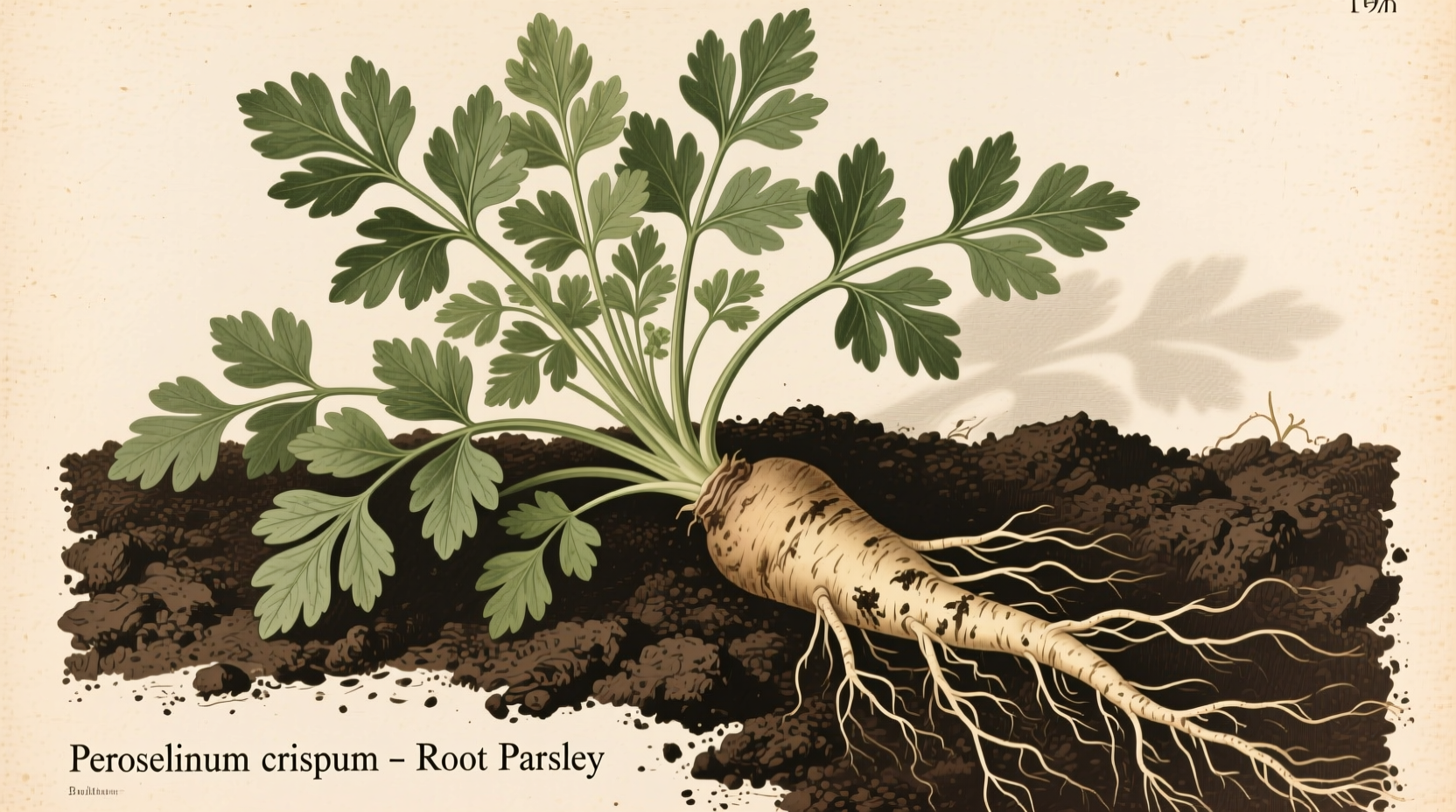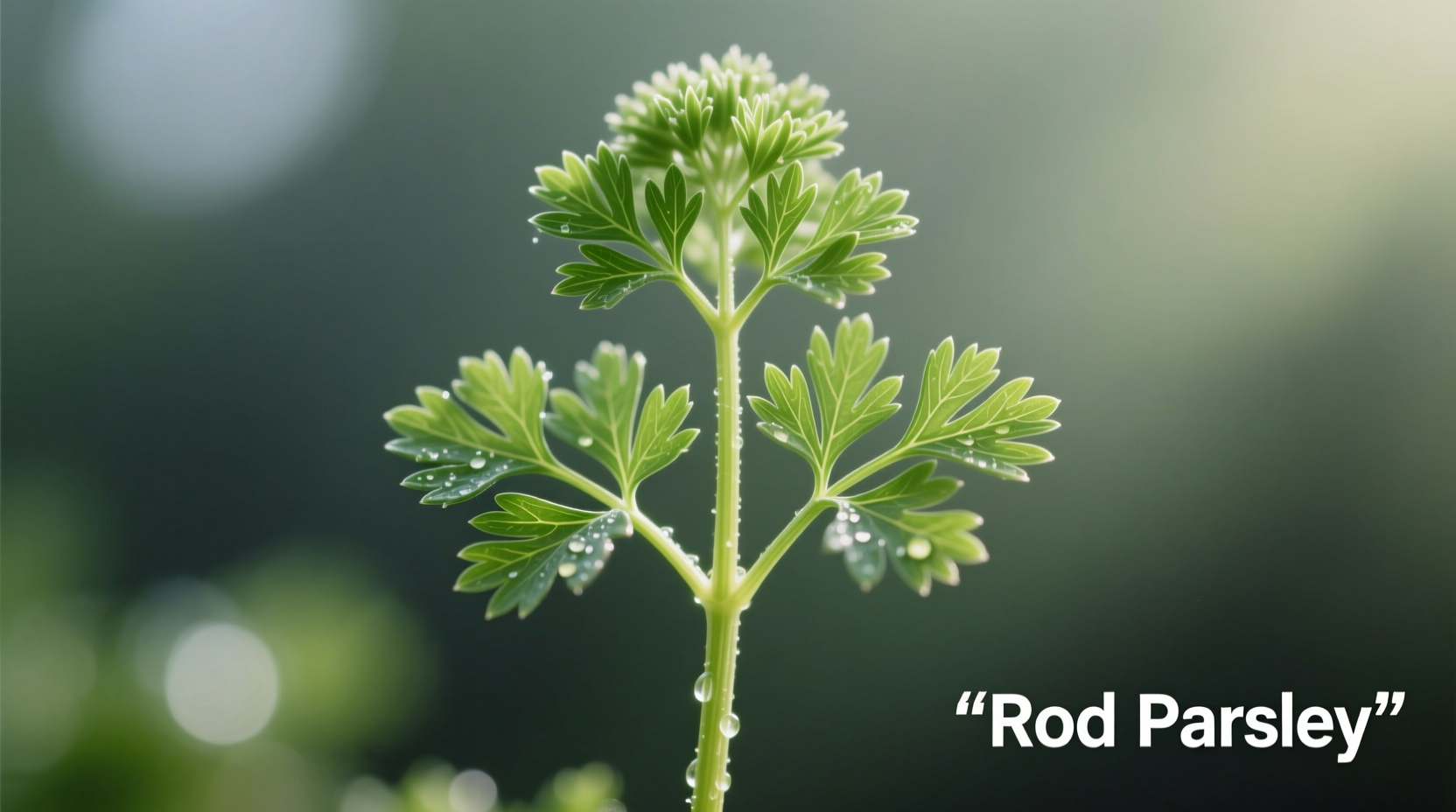Many home cooks and gardeners search for ‘rod parsley’, but this term doesn’t refer to any recognized herb variety. The confusion typically stems from mishearing or misspelling ‘root parsley’ – a legitimate cultivar with centuries of culinary history across European kitchens. Understanding this distinction unlocks access to a versatile ingredient that’s far more than just ‘parsley with roots.’
What Root Parsley Actually Is (And Why ‘Rod Parsley’ Doesn’t Exist)
Root parsley (Petroselinum crispum radicosum) belongs to the same Apiaceae family as carrots and celery but features a distinctive cream-colored taproot with a milder, sweeter flavor than its leafy cousins. Unlike standard parsley varieties grown primarily for garnish, root parsley’s swollen root resembles a pale parsnip or small turnip. The term ‘rod parsley’ appears in search queries frequently but has no botanical basis – likely originating from phonetic confusion with ‘root.’

Historical Evolution of Root Parsley Cultivation
While leaf parsley traces back to Mediterranean regions as early as the 3rd century BC, root parsley’s development represents a deliberate agricultural adaptation. Historical records from German monastic gardens in the 16th century first documented selective breeding for enlarged roots. By the 18th century, German and Eastern European farmers had established distinct cultivars optimized for root production rather than foliage.
| Era | Development | Primary Regions |
|---|---|---|
| Pre-1500s | Leaf parsley used medicinally | Mediterranean |
| 1500-1700 | First root-focused cultivation | German monastic gardens |
| 1700-1900 | Distinct cultivars established | Germany, Poland, Russia |
| 1900-Present | Decline in Western cuisine, niche specialty | Eastern Europe, specialty markets |
Root Parsley vs. Leaf Parsley: Critical Differences
Understanding these distinctions prevents culinary mistakes and helps you select the right variety for your needs:
- Flavor profile: Root parsley offers earthy-sweet notes with subtle celery undertones, while leaf parsley provides bright, grassy freshness
- Culinary applications: Roots excel in slow-cooked dishes; leaves work best as finishing garnishes
- Nutritional composition: Roots contain higher carbohydrate content and different phytonutrient profiles
- Storage characteristics: Roots maintain quality for weeks refrigerated; leaves wilt within days
When Root Parsley Shines in the Kitchen
Root parsley’s unique properties make it indispensable in specific culinary contexts, though it won’t replace leaf parsley in all applications. Consider these usage guidelines:
| Ideal Applications | Limited Value Applications | Substitution Notes |
|---|---|---|
| Stocks and broths | Fresh herb salads | Use 1:1 for parsnip in soups |
| Roasted vegetable medleys | Garnishing finished dishes | Replace 50% of carrots in stews |
| Pureed root vegetable sides | Persillade preparations | Not suitable for chimichurri |
Professional chefs in Eastern European kitchens particularly value root parsley for building flavor foundations. As Antonio Rodriguez explains, “The root’s sugars caramelize beautifully during roasting, creating depth that leaf parsley could never achieve. But toss it into tabbouleh? You’d completely miss the bright herbal notes the dish requires.”
Nutritional Profile and Health Considerations
According to USDA Agricultural Research Service data, root parsley provides unique nutritional benefits compared to leaf varieties. A 100g serving contains:
- 67% of daily vitamin C requirements (higher than leaf parsley)
- Significant potassium and magnesium content
- Distinct flavonoid profile including apiin and parsley glycoside
- Nearly double the dietary fiber of leaf parsley
Unlike leaf parsley, which contains apiol in concentrations that may concern pregnant women when consumed excessively, root parsley’s apiol levels remain minimal according to European Food Safety Authority assessments. However, those with celery allergies should exercise caution due to botanical similarities.
Selecting and Storing Root Parsley Properly
Finding authentic root parsley requires attention to detail, as many markets mislabel standard parsley roots. Look for these identifying characteristics:
- Smooth, cream-colored skin without green discoloration
- Root diameter typically 1-2 inches (larger than standard parsley roots)
- Fresh, vibrant green foliage attached (indicates recent harvest)
- Firm texture without soft spots or cracks
Store root parsley by trimming greens (keeping 1 inch of stem), wrapping roots in damp paper towels, and placing in a perforated plastic bag in your refrigerator’s crisper drawer. Properly stored, roots maintain quality for 3-4 weeks – significantly longer than leaf parsley’s typical 5-7 day shelf life.
Growing Root Parsley Successfully
Gardeners interested in cultivating root parsley should note its specific requirements differ from leaf varieties. The University of Wisconsin’s Horticulture Department recommends:
- Sow seeds directly in loose, stone-free soil after last frost
- Maintain consistent moisture (unlike leaf parsley, roots require steady hydration)
- Thin seedlings to 4-6 inches apart to allow root development
- Harvest when roots reach 1-2 inches in diameter (typically 70-90 days)
Attempting to grow root parsley in compacted soil often results in misshapen, fibrous roots – a common reason home gardeners mistakenly believe they’ve grown ‘rod parsley’ when they’ve simply produced deformed standard parsley roots.











 浙公网安备
33010002000092号
浙公网安备
33010002000092号 浙B2-20120091-4
浙B2-20120091-4